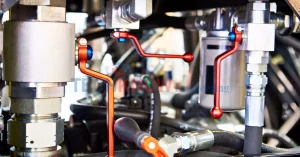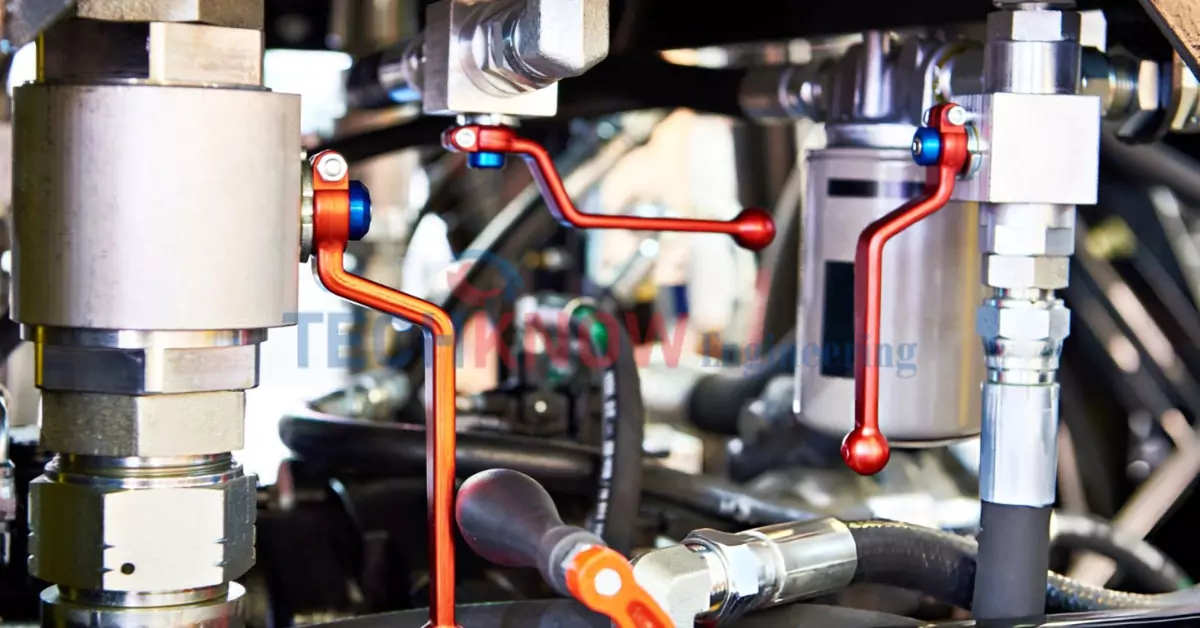What are hydraulic solutions? A Comprehensive Guide
Many engineered systems are built on hydraulic solutions. Hydraulics are used to power everything from heavy machinery and precision medical equipment. They’re indispensable for modern engineering.
Pressurized liquids are used to create motion and force in hydraulic systems. Understanding how hydraulic systems work, the components and applications they use is not just important for researchers and scientists, but also for mechanics, engineers and technicians.
The blog explores the basics of hydraulic solutions. It will cover their fundamentals, components and real applications. You’ll also learn about maintenance, future trends, as well as the essentials.
This guide will help you improve your skills and knowledge, whether you are an engineer or a technician.
Hydraulic Solutions: Understanding the Principles
Hydraulics is based on fluid dynamics and the pressure. It means that liquids (usually oil-based or water-based) are used to transmit force and amplify it. These principles are based upon Pascal’s Law which says that any pressure placed on a fluid in a closed container is equally transmitted to all directions.
Hydraulics: How they Work
Pressure is created when a force acts on a fluid in a closed system. The pressure created can be used to power motors, move pistons, and operate valves. Hydraulic amplification allows even small forces to generate much greater outputs, which makes hydraulic systems ideal for heavy duty applications.
Example:
Imagine the braking system of a vehicle. The brake pedal is activated by hydraulic fluid, which amplifies the power of the brakes. This brings the vehicle to a safe and efficient stop.
Hydraulic Systems: Key components
To understand hydraulic systems, you must know the components of these systems. The primary components and their function are listed below:
1. Hydraulic pump
Pumps are the core of all hydraulic systems. The pump converts mechanical into hydraulic energy when it presseurizes the fluid. Gear pumps, vane and piston pumps are all common types.
2. Hydraulic cylinder
The cylinders convert hydraulic energy to linear motion. It’s often found in lifting systems, push or pull systems, like forklifts and crane booms.
3. Valves
The valves control flow, pressure, and direction of hydraulic fluid. Pressure control valves are examples, as well as flow control and directional valves.
4. Reservoir
It stores fluids, removes contaminants and air, and dissipates the heat. This is essential to maintain the efficiency of your system.
5. Hydraulic Fluid
Hydraulic fluid, which is often overlooked, can be just as important as mechanical components. The fluid cools down the system and reduces wear. It also prevents corrosion. The correct fluid increases performance and durability.
6. Hoses, Connectors, and Tubes
Hoses and fittings that are flexible ensure fluids travel between system components with no leakage, and can handle the pressure and flow required by the system.
Hydraulic Solutions Used in Various Industries
Hydraulics solutions are used in many industries, and they enable machines to work with power and precision. Here are some key hydraulic applications in different industries.
- Construction and Heavy Equipment
Excavators, cranes and bulldozers are powered by hydraulics. The hydraulics provide immense power to lift heavy weights, but also the precision needed for fine adjustments.
- Manufacturing and Robotics
Hydraulic power is used to perform repetitive tasks in factory robot arms, and hydraulic strength and durability are essential for pressing and forming machinery.
- Aerospace Engineering
In airplanes where the reliability of hydraulic systems is essential, they are used to control landing gears, flaps and brakes.
- Automotive Sector
Hydraulics can improve vehicle performance, safety and reliability.
- Healthcare and Medical Devices
Precision is the key. The use of hydraulic-powered hospital beds and surgical robots allows for delicate procedures and comfort to the patient.
Tip: Customize hydraulic systems according to your specific industry requirements in order to achieve optimal performance and safety.
Hydraulic System Maintenance and Troubleshooting
Hydraulic systems are reliable but require regular maintenance in order to function at peak performance.
1. Regular Inspections
- Look for leaks Leaks in hydraulic fluid can affect performance and put pressure on other parts.
- Seals : Inspect seals . Worn out seals may cause contamination and leaks. Replacing them as soon as possible is a good idea.
2. Fluid Maintenance
- Check Fluid Levels Ensure that the reservoir is filled with enough fluid.
- Replace Fluids Regularly Contaminated fluid or that which has degraded can cause damage to components.
3. Replace your filters
Regular maintenance includes replacing hydraulic filter to prevent debris from entering the system.
4. Common Problems and Their Troubleshooting
- Unstable Movements may indicate trapped air in the system.
- Heat Could be caused by excessive loads, contamination or low fluid level. Find the cause and fix it immediately.
These maintenance practices can help technicians extend the life of hydraulic systems, and increase their performance.
Hydraulic Technology: Innovations and Trends
To keep up with the modern demands of industry, hydraulic solutions continue to evolve. Here are some emerging trends in hydraulics.
1. Electro-Hydraulic Systems
Electro-hydraulics systems combine the precision and power of electronic with hydraulics to provide more efficient, responsive solutions. They also have real-time monitoring capability.
2. Smart Hydraulics
Smart sensor-equipped hydraulics, which can perform predictive maintenance, and make automatic adjustments to increase efficiency, are now commonplace with the IoT.
Imagining a system which alerts users to potential problems before they occur, thus reducing the downtime.
3. Environmentally Friendly fluids
Biodegradable fluids and environmentally friendly fluids have been tested by manufacturers to increase sustainability, without compromising on performance.
4. Compact Systems
In applications such as robotics and automotive, where space is limited, it’s important to have designs that are compact.
The latest hydraulic technology can help businesses gain a competitive advantage, while making their operations more efficient and sustainable.
Be More Productive With Hydraulic Knowledge
The hydraulic solutions that engineers use to power everything from heavy construction equipment and medical devices, up to precision instruments for precise treatment, are essential. Engineers, mechanics, and technicians can maximize their potential by understanding the principles, applications, and components.
Maintaining and troubleshooting systems will ensure that they run smoothly. Keeping an eye out for emerging trends is essential to prepare your business for the future.
At Techknow Engineering Enterprise, We are passionate about hydraulics and empower professionals such as you. Do not hesitate to contact us if you want to know more about hydraulic solutions or if you need professional advice. We can optimize and streamline your system.
Contact us to start today. Learn how hydraulics will transform your project.
Hydraulic Solutions

Unlock the power of hydraulic solutions with this comprehensive guide! Explore the fundamentals of hydraulic systems, key components like pumps, valves, and cylinders, and their diverse applications across industries. Learn essential maintenance tips to enhance performance and longevity. Stay ahead with insights into future trends shaping hydraulic technology. Perfect for engineers and industry professionals looking to optimize efficiency and innovation.
Product Brand: Techknow Engineering Enterprise
Product Currency: INR
Product In-Stock: InStock
5

